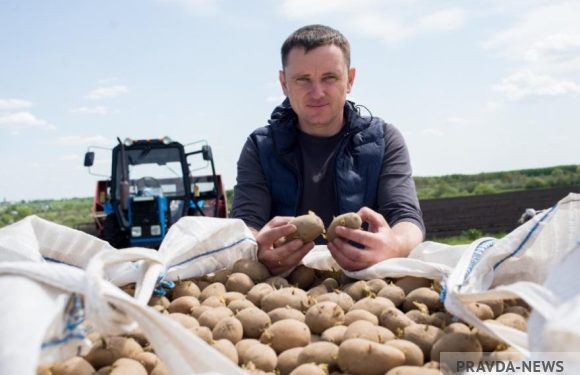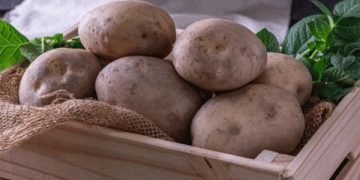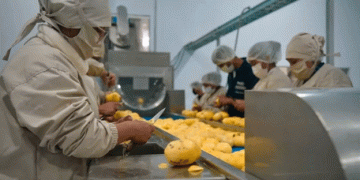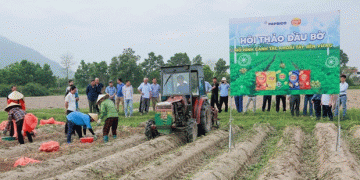Potato grower Andrey Bogatkin from the village of Muratovka is so passionate about his work that he dreams about it at night
This is to live
- I see dreams: it’s like I didn’t plant potatoes on time, I didn’t water them, I didn’t treat them with herbicides – and they overgrown with weeds. In general, her head hurts 24/7, – Andrey admits.
But this does not sound like a complaint about a hard farmer’s lot, but like a story about a beloved, albeit capricious child, who gives the parent a lot of trouble.
- This year, the spring turned out to be cold, I had to delay planting, so the early potatoes did not even begin to bloom: they filled the bud and threw it off. As I felt that there was no time left for flowering, we must hurry to tie the tubers. In the morning I come to the field – she
alone, in the evening – completely different. So interesting! This is what you need to live…
It is not surprising that with such an attitude towards the second bread, Bogatkin became one of the best potato growers in the Penza region. He started his business 12 years ago – father Alexander Anatolyevich, also a farmer, allocated several hectares of land to his son.
On the crest of success
At first, they planted potatoes using ancient methods – by hand, in furrows, rolled with an ordinary log. But this technology did not give high yields, and Andrey had to immerse himself in the theory of vegetable growing, to study the best practices in the cultivation of root crops.
In the end, he chose the Dutch innovative method, which allows you to collect 30–40 tons of potatoes from one hectare: the tubers are planted in formed high ridges that well protect the underground part of the plant from putrefactive processes and help saturate the bushes with oxygen and sunlight.
However, this technology required millions of investments: a tractor, a potato planter, a bed former, a potato harvester, an irrigation system, and storage were needed. And, of course, elite seeds.
The entire profit from the sale of potatoes was spent on the development of production, and several loans had to be taken. A grant from the Ministry of Agriculture in the amount of 1.5 million rubles, which the KFH received in 2017, was a great help.
Not used to clean
“We really began to get high yields: we don’t collect less than 30 tons per hectare, in one year it even reached 42 tons,” says Bogatkin. – We grow several proven zoned potato varieties. The most popular and delicious is “gala”, bred by European breeders. Also looks beautiful. I remember that we prepared it for sale (washed it, packed it into nets – tuber to tuber, not a spot, not a wormhole) and took it to Penza to the fair. They laid it out on the counter – and people walk by, they say: “Why do we need Egyptian potatoes?”
I’m tired of proving that this is my own, Moksha. And they have their own: “Will you lie, where does such a thing come from in Mokshan?” And they go to a neighbor who sells potatoes in the usual format – he has them in zinc buckets, plastered with earth. You can’t imagine how embarrassing it was!
Early varieties of root crops in KFH will begin to be harvested in the last days of August, although they will ripen much earlier. But Bogatkin does not sell young potatoes. According to Andrey, this niche in our market was occupied by the Krasnodar Territory and other southern regions, which are already supplying tubers of the new crop.
- Young potatoes are very tender, they are harvested almost by hand so as not to damage the tubers, which requires additional labor. Now it is unprofitable and unprofitable for us. We will wait until the peel on the tubers becomes dense enough so that we can safely harvest them with a combine and put them in storage for the winter.






